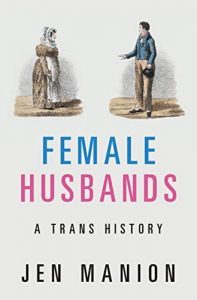 Compelling Book On Trans History Is The Resourcer The LGBTQ+ Community Has Been Missing
Compelling Book On Trans History Is The Resourcer The LGBTQ+ Community Has Been Missing
We all know the pain of feeling alone in our story. For LGBTQ+ young people – especially those who identify as a gender different than the one they were assigned at birth – this pain is exacerbated by the common misconception that living as transgender is new.
Trans people are receiving messages from media and society that tell them they are the first to live this way, the first to ask society to allow them to live their true lives, the first to expect friends and coworkers to respect their chosen identity. But they’re not.
In Female Husbands: A Trans History [March 31, 2020, Cambridge University Press] Dr Jen Manion tells the stories of countless people assigned females who transcend gender, lived as men, and married women. The true queer pioneers.
Female Husbands offers a series of short biographies along with an analysis of how broader social, economic and political developments influence popular attitudes toward and treatment of the couples from the 1740s through the 1920s.
An explosion of gender non-conformity, the emergence of queer subcultures, the expansion of women’s rights, and more strict regulation of marriage licenses all led to the demise of the category of “female husband” early in the twentieth century.
As we see new LGBTQ+ and trans history being made every year and lament the backwards policies and politics which continue to damage this community, it is important to understand the individuals and communities that came first.
“Sex and gender are two different things; people have always transed gender and long ago many were more accepting and understanding of gender than people today,” says Dr. Manion. “What has stuck with me the most is how excited trans and nonbinary people are about this history – it means so much to them to learn that they are not the first, they are not alone, and that they can read a history book about people from hundreds of years ago navigating the same issues they navigate in their lives today.”
History buffs, queer culture vultures and everyone interested in the stories and lives of others will devour this compelling work


